Marc MacYoung?
Dianna Gordon MacYoung?
Animal E-list
Crime Avoidance Lectures
Crime Blog
Colorado Classes
Contact Us
FAQs
Hosting A Seminar
Crime Prevention
Expert Witness
Knife Defense
Law Enforcement
Martial Arts
Military
Movie Consulting
Women's Self-Defense
Links
Our Linking Policy
On-line Store
Train with MacYoung
Testimonials
Terms of Use
Topics of Interest
There are no right
answers
to wrong questions
Ursula K le Guin
Fear Management vs. Danger Management
On this page:
Fear Management vs. Danger Management |
When It Gets Mixed |
So How Do You Tell The Difference?
This is a long and complex page, you might want to go get a cup of coffee.
I am often contacted by people who have had a bad experience and now want to know how to gain control of their lives back.
The problem is that they've just become aware of a complex, dangerous and ugly side of life. By this I don't just mean they know about it. Intellectually they've known about it most of their lives. I mean they've just become aware that it's been sitting next to them -- invisible to them -- for their entire lives. They just never bumped into it before.
Now that they've bumped it, they want to know how to put it into a box and feel safe again.
Unfortunately that's the wrong way to go about it. Namely because there's a big difference between doing something about your fears and doing something about danger.
One requires work and thinking and -- while it will keep you safe -- it really isn't about your feelings (although it will influence them). One still leaves you in danger, but makes you feel good about it.
Fear Management vs.
Danger Management
Let's start with the fact that there's a difference
between fear management and danger management. I'm
talking in extremes here, but it's to communicate an
idea.
The reason ISN'T that it solves the problem. It's not even that it soothes your fears. It's that it reconfirms your fears. It gives you an 'answer' in the context of your terror.
By giving you a talisman against vampires, it confirms vampires exist, that they are a danger and that without this talisman you are in danger. By having this talisman you are emotionally empowered without ever addressing the fact that vampires don't exist. Or, that you believe in them and are letting fear of imaginary monsters guide your life.
That is fear management. It only addresses the emotions, NOT the actual problem.
Having lived in the desert, I can tell you that scorpions are real. Worse it isn't the big ugly black ones that are dangerous, it's the little, hard-to-see small brown ones that will kill you. Being stung by a scorpion is a very legitimate danger in the desert.
However, if you develop certain habits --like shaking out your boots, pulling your bed covers back before you climb in, not going barefoot, not sticking your hand into dark places, wearing gloves when moving piles of stuff outdoors, etc.-- you reduce your chances of getting stung by about 99%.
Good habits, based on proven strategies is danger management. It's not sexy. It's not exciting. It's really not emotionally empowering. It's just good safety protocols.
When It Gets Mixed and
Mushed
When fear management is applied to danger
management you get an ugly and ineffective
hybrid. This is why I used scorpions and vampires as
models. Unreasonable fear is easy to spot when
applied to vampires. It's more insidious when applied to
a legitimate danger.
Let's say someone is paranoid about scorpions. Because they are real, you can't totally dismiss the danger. But what's worse is that fear will, not only color, but often undermine danger protocols.
For example that person will spend 10 minutes shaking his boot because the scorpion that might be in there might somehow manage to hang on. In real paranoid cases it's 'what if it walked through some superglue before it climbed in and is glued to the inside of the boot?' (again, obviously an extreme, but fear and imagination are closely linked). But not matter how unrealistic the imagined danger is, it appears real to that person.
The problem with the fear and danger combo is that -- while the actual danger is finite -- your imagination is infinite.
(As an aside I was talking to an evolutionary psychology prof and he explained that imagination is a survival tool. Animals have instincts [behaviors that don't have to be taught and are preprogrammed]. Animals will automatically attempt to do these regardless of conditions [e.g. a northern squirrel in a zoo in Florida will still horde food for winter]. Humans, on the other hand, have imagination, which is a far more powerful survival tool. Some caveman noticed that every year there are times of green and lots of food and times of white and limited food. When everything was green and lots to eat, but imagining the white stuff would come back, early man figured out squirreling away the food is a good idea. With this powerful tool mankind has managed to adapt to every environment on this planet. That's imagination when it works. When it spins out of control, is when you have a problem.)
When fear and imagination mix about legitimate danger, this part of your brain will always find new and more complex ways to scare you -- with more complex and lurid versions of danger. Versions, incidentally, that somehow always manage to do a work around legitimate danger management protocols (e.g. scorpions and superglue)
This is the driving motivation of people I refer to as WIMs (What If Monkeys). They are always asking 'what if it doesn't work?' about any danger management protocol. Not only does their imagination take them to a worst case scenario, but it takes them there before they understand how the management protocol work against legitimate dangers. They've already decided it won't work against flying-vampire-scorpions, so they don't bother developing that habit. Unfortunately, WIMs are attracted to the subjects of self-defense and personal safety like class action suit lawyers to an oil spill.
So too are the purveyors of fine and powerful talismans.
In fact, they have the ultimate self-defense talisman for just $9,999.99 (plus yearly renewal fees and additional training.) While talisman thinking often revolves around a self-defense item, most of it comes in the form of training (they'll sell you both the cross and the special prayer to repel vampires.(1))
Remember danger management doesn't pander to emotions, fear management does. That's why it sells better and is so outrageously priced. People aren't paying that much for something that actually works to reduce danger, they're paying for something that makes them feel good about having a problem.
From a danger management perspective programs promoting 'talisman thinking' have just enough truth to make them appear legitimate. Unfortunately, most of these ultimate talismans are only one microscopic aspect of legitimate danger management protocols. They've taken one small aspect, overblown it and magnified it to such a degree that it actually increases danger from other directions.
Using the previous example, these guys will sell you the ultimate scorpion proof tactical gloves (with additional chain maille add-ons for only $4,999 more). These talismans are so you will never have to worry about getting stung by a scorpion again. A person's fears about scorpions is pandered to, but at the same time he stops shaking his boots, checking his bed and walks around outside barefoot. If you live in the desert, that's bad.
What's really bad is that the person can smugly tell
himself
1) he's doing this because of a legitimate danger
2) he's smart enough not to believe in vampires
3) he's smarter than all those other sheep who don't
know
the danger of scorpions
If that sounds odd, realize: Fear management can REALLY become deeply enmeshed in our concept of who we are. A lot of people use it as a form of self-identification. In fact, it can often become a form of elitism. That's the person who sniffs in distain at 'sheeple' who are not prepared or aware of the danger like he is. You could hand these guys "Elitist paranoid and proud of it" shirts.
It is only a small step from being paranoid to being a fanatic because you've found the TRUTH™ Like we said, both can become powerful elements in one's self-identity.(2)
So How Do You Tell The
Difference?
The first step is not to let your emotions blind
you to what you know.
For example, you know if you shoot someone, there is going to be legal consequences. Nothing is going change that.(3)
What you might not know is self-defense is a legally defined term that has some pretty strict guidelines. Guidelines that are easy to cross and turn a situation into fighting (illegal and participatory violence). The higher the level of force (gun or knife) the more strict those guidelines. The important thing is, you can learn about these guidelines and function within them and still be safe! That's actual danger management because it protects you both from the attack and going to prison.
Fear management will tell you to not bother with that. Learning legal use of force? Prison? Pffffft! Those aren't important. What is important is your fear of being attacked.
That flies directly in the face of what you know -- and what is demonstrably true. If you're scared about being attacked and you carry a talisman (gun or knife) without any training about when you can legally, ethically and justifiably use it you're setting yourself up for disaster.
Functional self-defense training is about more than just HOW to punch and kick or use a knife or gun. But most martial arts schools, so-called 'reality based self-defense' and women's self-defense programs DON'T teach that. That's because they're providing fear management, NOT danger management. Worse, many talisman peddlers will tell you flat out "I'd rather be judged by 12 than carried by 6" or how knowing self-defense law will cause you to freeze at a critical moment.
Second step: No matter how much you want to believe that confident and muscular person about what's involved in self-defense, cross check the information AT the sources.
For example: If someone tells you this is the legal standard of self-defense, that person had damned well be an attorney. If he is not -- then run it BY an attorney! And that includes whatever I tell you! I have personally witnessed martial arts instructors tell their students
ANY of those will get you arrested and convicted of not only assault, but attempted murder, if not murder.
If a martial arts master tells you that this blow will drive someone's nose bone into a person's skull, talk with a medical doctor about the possibility. If some RBSD person tells you this is a lethal blow that will drop a person, talk to someone who has been in hand-to-hand combat or has done a few tours of duty and knows how hard it is to kill someone. With an ongoing war in the Middle East, there are lots of people who have experience killing -- and how hard it can be to effectively stop someone intent on killing you. If someone tells you what works in a 'real' fight, go out and ask someone who's job it is to to use physical force, cops, bouncers, correctional officers, ER security -- NOT professional gym rats.
Third step: When it comes to your safety, stop looking for
1) absolutes
2) guarantees
3) simplistic 'you only need to do this' answers
People seeking fear management love these kinds of answers. The idea is all you need is to know an ultimate fighting system, carry a weapon, carry your keys between your fingers, study mixed martial arts or know some deadly secret technique that starts with "THE (fill in the blank).
And all you need to be safe from vampires is a cross and this powerful prayer.
There are no simplistic answers to the complexities of violence. Violence happens for many reasons, at many levels and has different motivations. What is the 'right' answer for one kind of situation is a disaster in another. What works against a committed attacker is overkill against Drunken Uncle Albert at a family reunion. What works against Albert will get you killed against a committed -- and armed -- attacker.
While the components of conflict are pretty consistent, there are lots of variations and subtle ways they can be mixed and manifest. Coming up with the 'right' answer to the situation is based on your knowledge of levels of force, what's appropriate for each and your ability to accurately assess the threat level.
Fear, however, is going to tell you that any conflict is Ragnarok and you need to go berserk in order to survive.
Step four: LEARN PEOPLE SKILLS!
A big issue of fear based training is that somehow you magically find yourself in an extreme situation where you have no choice but to fight. How exactly did you find yourself in a dark alley with your wheelchair bound grandmother and your children, surrounded by muggers so you have to unleash your killer kung fu commando training?
A friend of ours, William 'Buzz' Lange, once observed: In order for a system to go out of control the warning signals have to be ignored, or worse, intentionally turned off.
This is a very profound observation, especially when it comes to violence. Violence doesn't just happen. Nor does it pop out of nowhere. It takes time and effort to get there. Violence is an extreme of human behavior as well as a predictable process.
What's most predictable about it is how it occurs when the warning signals are not recognized, minimized, ignored or flat-out flushed down the toilet. This is especially true because most violence occurs between people who know each other. In case you haven't figured it out, we're talking about a fight.
That's a situation where you have two people in conflict who are BOTH participating in the creation, escalation and process. If you're fighting, you're part of the problem ... no matter how self-justified you feel you are.
Putting that in terms of Buzz's quote, both of them are ignoring the warning signals. The urge to 'win' can -- and does -- blind you to what you're doing. It's always amazing to me when people commit the most vicious, serves-no-other-purpose-but-to-hurt verbal attacks and then are shocked when someone punches them in the face. They attacked verbally, someone counter attacked physically, why are they surprised someone escalated the violence after they did the exact same thing?
Right there is the underlying problem of most fear management systems. They aren't teaching you 'self-defense,' they're teaching you how to win a fight. A fight that usually could have been avoided with some people skills.
Worse, they often pander to the false idea that you can say and do anything you want because now you know how to 'defend yourself' if someone takes umbrage and physically attacks. It's self-defense doncha know?
This attitude is increasing your danger. Not only physically, but legally too. The last if you 'win.' It means you are an active participant in creating a violent situation.
But you won't hear about the need to develop people skills in fear based training. The raw truth is most so-called self-defense training only give lip service to awareness, avoidance, de-escalation. After claiming that they teach it, they spend 97% of the class time teaching you how to bust someone's skull.
And that works GREAT with what talisman seekers want. When it comes to violence, a huge element of fear management is: Now that I have put myself into this dangerous situation -- through deeds, actions, emotional outbursts, self-righteousness, selfishness, ignorance, poor impulse control, lack of people skills or just plain not thinking -- how can come safely out of it? Oh yeah, and still preserve myself image, belief system and comfort zone while I'm at it?
I wish to God I was making this up. Putting it bluntly you don't need special training on how to kill or beat someone up. People do it all the time without training. Just look at the police call log.
What is far more useful -- not only from a self-defense standpoint, but a career, quality of life and interpersonal relationship -- is developing people skills. You do this so you DON'T end up looking surprised over the knuckles that just punched you in the face for what you said or did.
Let me state people who come to me with dangerous situations, categorically, come with a list of saying and doing things that escalated it. Because of pride, anger, emotional outbursts, over confidence they'd all walked into the situation with their eyes open and head up -- until it proved to be over their heads. (The closest to an exception was a mother whose son had ripped off a gang of drug dealers, but even she had unwittingly thrown away the drugs while cleaning house).
Violence doesn't just happen. There's a build up. A build up that if you don't see or recognize makes it seem like it came out of nowhere. Usually though that build up is not only right there in front of you, but you were a big part of. This is why knowing what not to do is so important (I'll explain that in a second).
If you're scared of violence happening take a good hard look at what you are doing that is making it likely. If you stop doing those things the odds of you being involved in a violent situation go WAY down.
And that brings us to the fifth and last step: Assess your danger
There are three basic risk categories. Low, Medium and High.
A middle-class, work-at-home mom with kids and a healthy, normal relationship is at very little risk. Simply stated, the odds are greater that she will be killed in a car crash than by violence from a stranger. And yet, fear can make her believe that there are ninja rapist/muggers lurking behind every corner.
Every year billions of people manage to get through life without being involved in any kind of physical violence or danger. How they live their lives greatly reduces the chances of them being involved in violence. Simply stated, take a lesson from those people. They have some very effective strategies for both staying out of trouble and making sure it doesn't escalate. You'll quickly notice a large element of how they avoid violence involves what they don't do. There are those pesky people skills again ... things like not having to tell someone your opinion of them at the drop of a hat)
Low risk individuals really don't need to devote that much time to personal safety. Understanding some basics elements about how crime occurs a low risk individual really doesn't need to invest more than a minute (collectively) a day ensuring his or her personal safety. Three seconds here, three seconds there is all they need.
Medium risk is both situational and personal. Living in a bad part of town, working certain jobs/shifts, being related to certain people, these things are situations that increase your chances of being targeted for violence. A late night cashier at a gas station has a much higher chance of looking down the barrel of a robber's gun than an office worker -- especially if the gas station is near a freeway.(4)
Personal is more about behavior, lifestyle choices and who you choose to associate with. A member of the high school chess club is far less likely to get involved in violence than a member of the football team. The football player is less likely than a wild child, partier. Even if you're over 21, going out to bars and wandering around the city at 2 a.m. increases your chances of being involved in an incident.
Personal also has a lot to do with how polite you are to other people. It especially is related to how fast you go on the verbal offensive. In nicer middle class or professional environments, this is still medium risk behavior. Most 'nice' people will move away from an unnecessary conflict. This gives the illusion that being verbally aggressive is an effective strategy.
The truth is, it's only effective if you very carefully pick low-risk targets. Choosing to act this with the wrong person can, and will, get you assaulted -- especially if you do it on someone you consider beneath you. Target selection is unreliable enough that obnoxious behavior constitutes medium risk.
If you are in a medium risk situation, then yes, extra steps and precautions need to be implemented. On top of knowing how crime occurs, developing people skills, more attention to your environment, safety protocols and habits (like in dodgy neighborhoods doing your shopping and running errands during the 'safer' mid-day) are all advisable.
What is most important, however, is the ability to drop what you are doing and paying attention when things START getting tense. That includes changing your plans. For example: see those three guys hanging out at the parking lot entrance? It's time to turn around, go back inside and get help -- preferably security. If you decide to walk to your car, don't be surprised when you're robbed.
High risk is not only situational and personal, but it's going out of your way to find trouble. As we say in the High Risk Behavior section of this site, there's an appeal to it. Usually high risk behavior is fun. We're not just talking sex, drugs and rock and roll. We're also talking excitement, thrills, adventure and the sense of freedom and power. It's playing where the wild things are.
Or it can be a manifestation of extreme dysfunction, neurosis, addiction, dependence, co-dependence, low-self esteem and being so emotionally screwed up you make a corkscrew look like a ruler. This can result in you being involved with a selfish and mean prick. Or something much, much worse.
Of course it could also be your job to kick in doors, shoot people and drop bombs on people who are shooting at you or your friends. Fortunately, that kind of situation comes with lots of training on danger management.
If you're in a high risk situation that is WAY beyond the scope of what can be learned on a webpage. You need to learn either how to be really, really good at surviving there or get the hell out of there. And yes, you have to learn how to get out of high risk situations because getting out is easy (you just leave) staying out of another one is much, much harder. That's because your brain has been physically rewired by being there.
In closing let me say, DON'T let fear guide your actions. If there is a legitimate danger, learn danger management. There are reliable steps and protocols that greatly reduce your danger. As I often say, "Train for what happens most and you'll be able to handle most of what happens" This applies in spades AFTER you've done a risk assessment on your lifestyle. Don't worry about learning how to survive mafia hitmen coming after you if you aren't in that lifestyle.
Don't waste your time and money on crosses and special prayers that will keep you safe from vampires. If you're afraid of ninjas lurking around the corner waiting to jump you -- unless you pissed off a ninja clan -- the problem isn't external. It's fear.

1) In some extreme cases they'll teach you how to become a deadly vampire hunter Return to Text
2) The odd thing about most of these guys are -- from a danger management point of view -- living very low-risk lifestyles. I mean like 'wearing scorpion proof gloves in Minnesota' low-risk. This allows for all kinds conditions beneficial to fear management to arise. A big one is the flaws in their 'talisman thinking' are never revealed. They not only conveniently stay away from situations where 'those who pose legitimate danger' tend to flourish, but they consciously avoid getting working strategies from those who operate in conditions of legitimate danger. This allows them to maintain all their beliefs about the awesomeness of their tactical scorpion gloves (This can lead to some seriously strange rationalizations. "These gloves protect me from scorpions." "There aren't any scorpions in Minnesota!" "See how effective they are?") Return to Text
3)There are two exceptions:
A) you are a criminal and know how to get away with it.
B) you are in serious deep shit because 'the people' of the
person you killed aren't talking to the police because they are
going to handle it themselves by finding and killing you for
what you did.
Return to Text
4) Most robberies occur within a mile of a freeway or on major transportation route. This is referred to as the 'robbery corridor' as it allows the criminal easy access to an escape route. Also most robberies are of businesses instead of individuals (more money). In cases of individual robbery, these tend to happen in fringe areas. That is to say areas immediately outside densely populated and popular areas. For example, you won't be robbed in the mall, but rather the mall parking lot. Return to Text

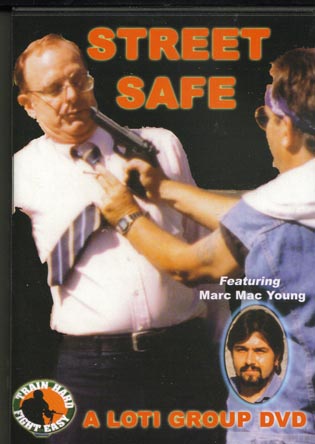
Street Safe: How to Recognize and Avoid Violent Crime
Learn More >
Order Now!
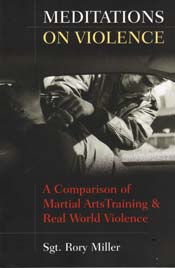
Meditations on Violence
Learn More >
Order Now!

The Bulletproof Mind
Learn More >
Order Now!

Safe in the City
Learn More >
Order Now!
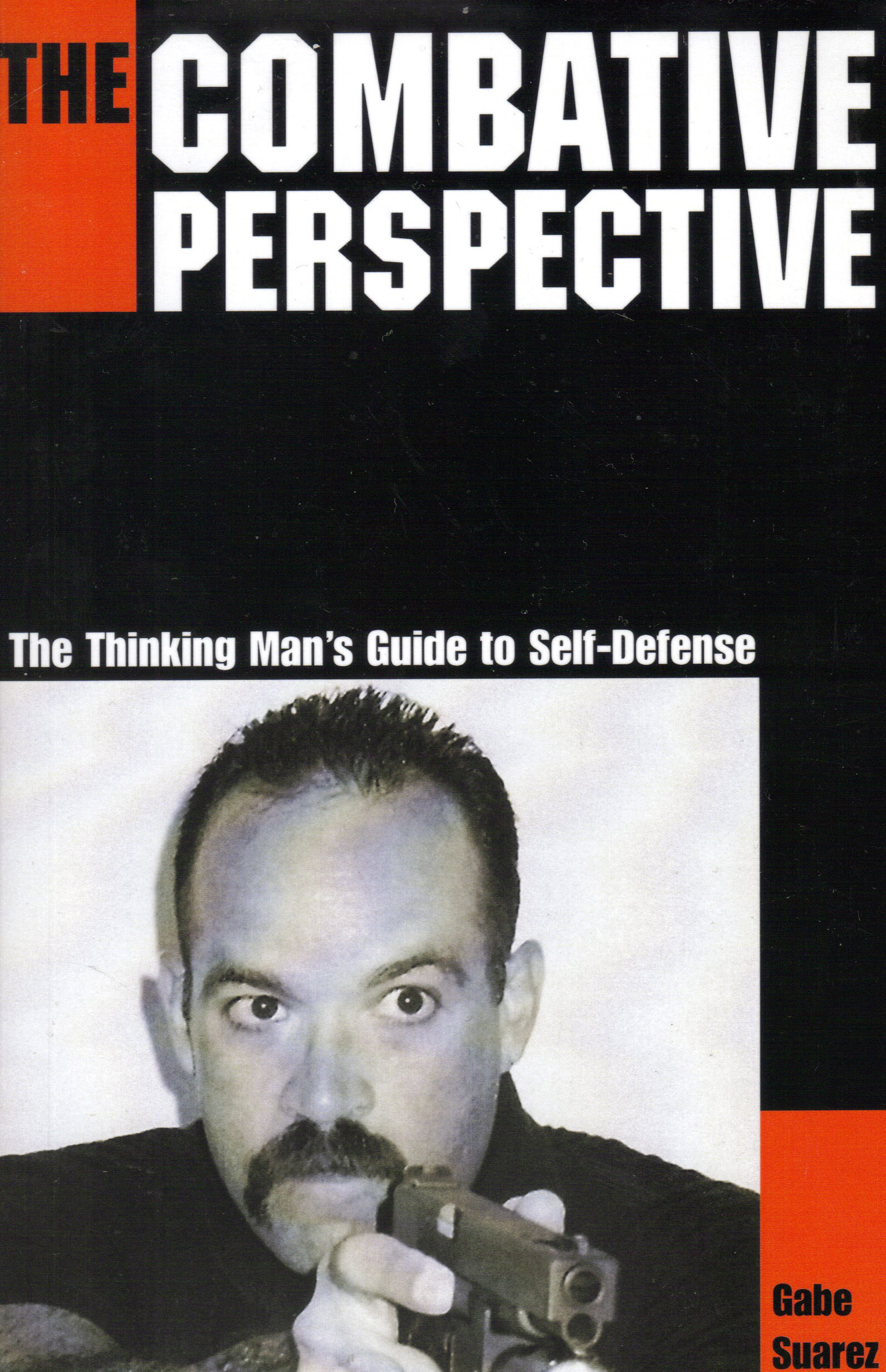
The Combat Perspective: A Thinking Man's Guide to Self-Defense
Learn More >
Order Now!

Do You See What I am Saying? Reading Body Language
Learn More >
Order Now!

Real World Self-Defense
Learn More >
Order Now!

Psycho-Physiological Effects of Violent Encounters
Learn More >
Order Now!

The Deadliest Men
Learn More >
Order Now!

Affordable Security
Learn More >
Order Now!

The Missing Link: Self-Protection Through Awareness, Avoidance and
De-Escalation
Learn More >
Order Now!

Escape Combatives
Special Bonus Feature
ESCAPE DRIVING
Learn More >
Order Now!

Post Shooting Trauma
Learn More >
Order Now!

Turning Fear Into Power
Learn More >
Order Now!
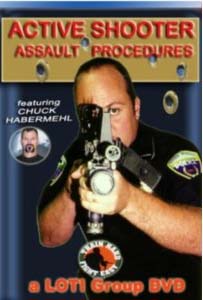
Active Shooter Assault Procedure DVD
Learn More >
Order Now!

Surviving Workplace Violence
Learn More >
Order Now!

Deadly Force Encounters
Learn More >
Order Now!
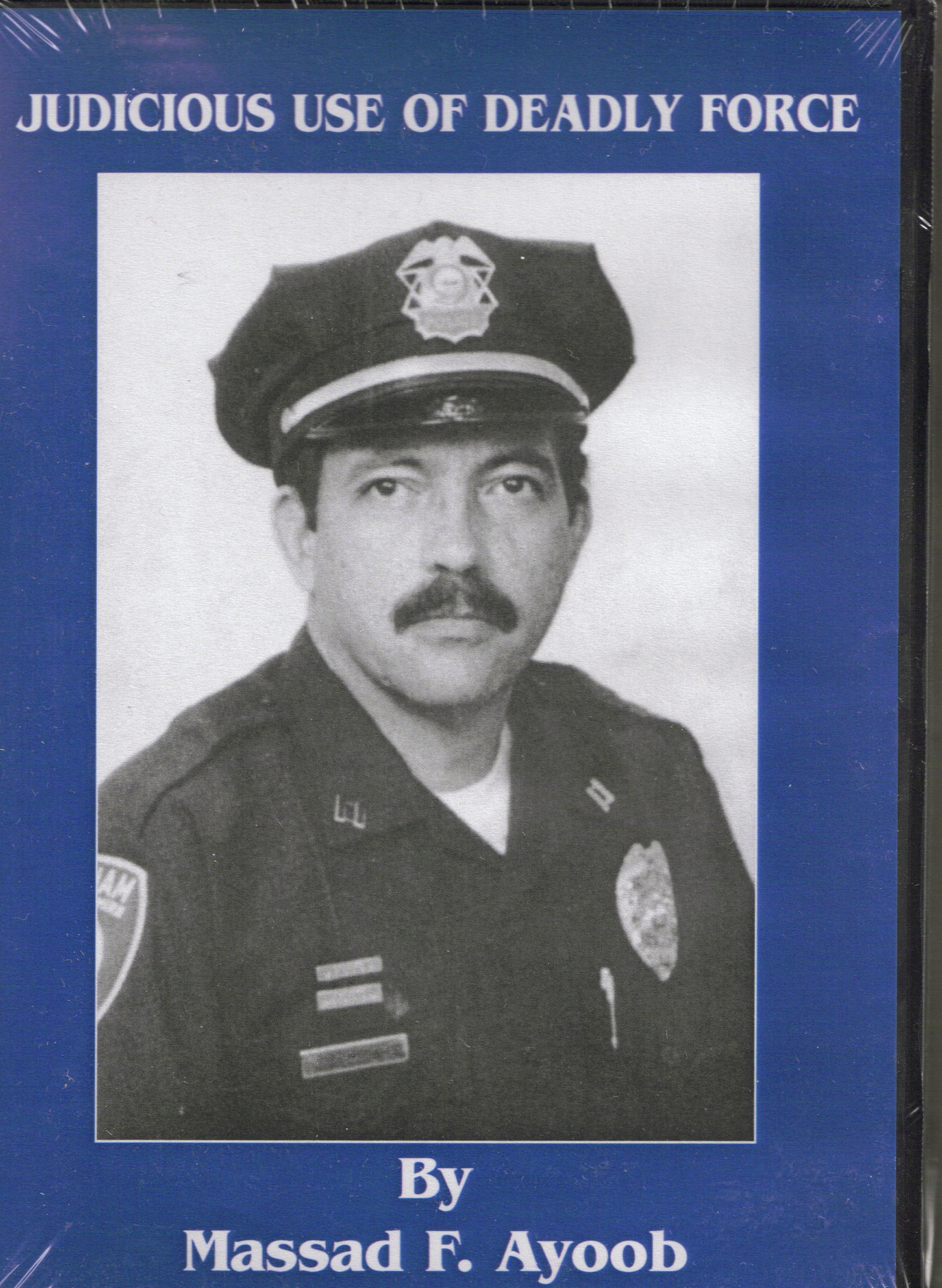
Judicious Use of Deadly Force
Learn More >
Order Now!
Christian Theme
Defeating The Victim's Consciousness
Christian Theme
| About navigating this site | Animal List | Bibliography | Bullies | Burglary while on vacation | Classes in Colorado | Car Jacking | Children and Martial Arts | Child Safety | Criminal Mindset | Cults in MA/SD | De-Escalation | E-mail Dianna | E-mail Marc| FAQs | Have MacYoung speak about crime | Home Page | Home Defense | Hosting a Seminar | Fear | Five Stages of Crime | Knife Fighting | Legal Issues | LEO/Correctional Officer/EMS | Linking policy | Links | Martial Arts | Photo Gallery | Property Crime | Psychology | Rape | Robbery | Safe Dating | Self-Defense Training | Selling your books/DVDs on NNSD | Seminar Schedule | Stalking/Domestic Violence | Street Fighting | Terms of Use | Testimonials | Train with Marc MacYoung | Who is Dianna Gordon MacYoung? | Who is Marc "Animal" MacYoung? | Victimhood | Workplace Problems | Zero Tolerance | ||
|
? 1998-2010 No Nonsense Self-Defense, LLC. All rights reserved. |